Unlock Your Perfect Ride: Top 8 Best Fixed Gear Bike Frames Reviewed
By- Ador Updated- 20th March 2025
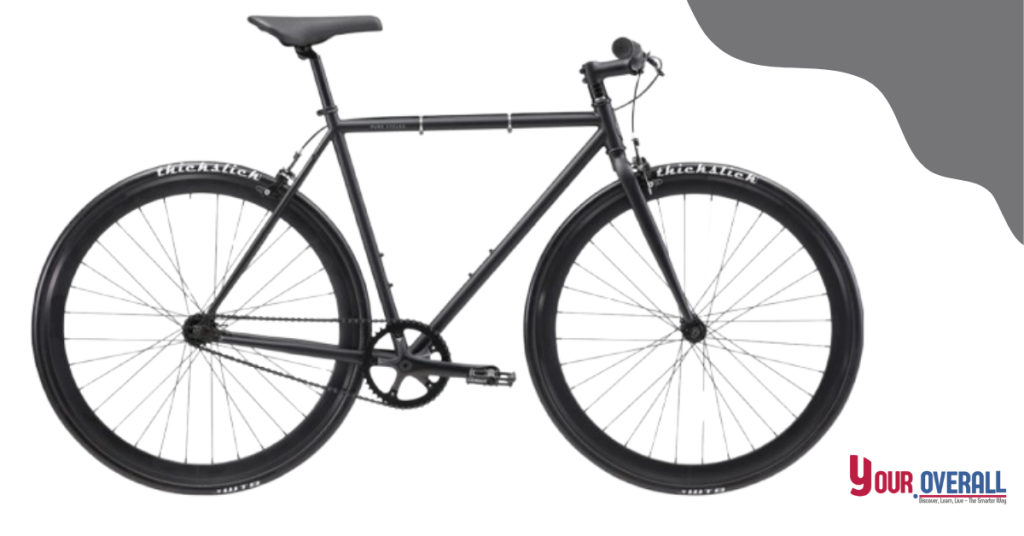
Introduction
Remember that very first time you felt really connected to the roadway? I sure do—it was on a borrowed fixed-equipment bike with a chipped steel frame that, in some way, made every pit seem like poetry. That’s the magic of the best fixed gear bike frames—they’re not simply elements but partners in your city adventures.
Choosing your frame is like online dating for cyclists. Get it wrong, and you’ll endure creaky commutes and awkward handling. Get it right? You’ll unlock that sweet spot where control meets character. Through trial and error (including that embarrassing skid-stop gone wrong in Brooklyn traffic), I’ve learned what separates show ponies from workhorses in the fixed-gear world.
In this guide, we’ll break down:
– The four frame types favored by bike couriers and weekend warriors alike
– Why material choice matters more than Instagram aesthetics
– Surprising maintenance hacks that triple your frame’s lifespan.
Best fixed gear bike frames aren’t about chasing trends but finding your mechanical soulmate. Did you know 68% of fixed-gear riders switch frames within their first year? We’ll help you avoid that costly mistake by matching your riding style to the perfect foundation.
No matter if you’re winding with city streets or following sunset criteriums, your frame is the silent hero of every ride. Ready to find yours?
Let’s shift gears and dive.
Table of Contents
2.What is a Fixed Gear Bike Frame?
2.1. Definition and differences
2.2. Key components
2.2.1. Dropouts
2.2.2. Frame material
2.2.3. Geometry
3.Why the Right Fixed Gear Bike Frame Matters?
3.1. Performance
3.2. Comfort
3.3. Durability
4.Types of Fixed-Gear Bike Frames
4.1. Track Frames
4.2. Urban/Street Frames
4.3. Cyclocross Frames
4.4. Custom Frames
5.Materials Used in Fixed-Gear Bike Frames
5.1. Steel
5.2. Aluminum
5.3. Carbon Fiber
5.4. Titanium
7.Fixed Gear Frame Features to Look For
7.1. Horizontal Dropouts
7.2. Tire Clearance
7.3. Frame Stiffness
7.4. Frame Weight
7.5. Finish and Coating
8.1. All-City Thunderdome
8.2. Wabi Lightning
8.3. Priority Ace
8.4. All-City Super Professional Apex 1
8.5. 6KU Track Fixed-Gear
8.6. State Bicycle Co. Core-Line – Rigby
8.8. Schwinn Kedzie
9.How to Choose the Right Fixed Gear Bike Frame
10.Maintenance Tips for Fixed Gear Bike Frames
11.Fixed Gear Bike Frame FAQ’s
12.Conclusion
What is a Fixed Gear Bike Frame?
Definition and Differences
A fixed-gear bike frame is the structural foundation of bicycles with a direct-drive system– no freewheel system. Unlike road or single-speed bikes:
- No coasting: Pedals move as long as the wheels turn
- Streamlined style: No derailleurs, shifters, or extra cable televisions
- Direct control: Your legs become the brakes, utilizing resistance
Key Difference:
Feature |
Fixed-Gear Bike Frames |
Road Bike Frames |
|---|---|---|
|
Dropouts |
Horizontal |
Vertical |
|
Brake Mounts |
Optional |
Standard |
|
Chain Tension |
Manual Adjust |
Auto-Adjust |
Key Components
Dropouts
These slotted rear axle holders are the make-or-break function:
- Horizontal: Allows chain stress changes (necessary for fixed gear).
- Track Ends: Angled dropouts for exact wheel alignment.
- Vertical: Dealbreaker (can’t tension chain properly).
Pro Tip: My first fixed-gear conversion stopped working because I used a roadway frame with vertical dropouts—the chain kept slipping!
Frame Material
Dictates ride quality and longevity:
- Steel: Absorbs vibrations (perfect for city streets).
- Aluminum: Lightweight yet transfers street buzz.
- Titanium: Best of both worlds (if budget permits)
Real Talk: NYC messengers swear by steel’s resilience—it holds up against aesthetics curbs, crashes, and salt.
Geometry
The Invisible Hand Shaping Your Ride:
Head Tube Angle:
- Steeper (74 °+) =Nimble handling.
- Slacker (72 ° -) = Stable cruising
Chainstay Length:
- Shorter = Quick velocity.
- Longer = Better skid control.
Golden Ratio:
- 73 ° head tube + 415mm chainstays = Urban sweet spot.
Why This Matters: The very best fixed gear bike frames effortlessly balance these elements.
Next, we’ll examine how various materials (steel vs. aluminum vs. titanium) impact performance.
Types of Fixed Gear Bike Frames
Your frame choice forms your riding experience—whether traveling city streets or tackling rough terrain. Let’s simplify the alternatives:
Track Frames
Designed for smooth velodrome surfaces (indoor cycling tracks), these focus on speed with:
– Aggressive geometry (forward-leaning riding posture)
– Narrow tire clearance (max 25mm width)
– Lightweight tubing for racing
Urban/Street Frames
Developed for daily commutes and irregular roads:
– Relaxed geometry (upright riding position)
– Wider tire clearance (approximately 35mm) absorbs bumps
– Double-butted steel(thicker at tension points, thinner somewhere else) balances strength and weight
*Real-World Test:* My daily rider endured 5 NYC winters thanks to its rust-resistant coating.
Cyclocross Frames
Hybrid warriors for mixed surfaces:
– Higher **BB drop** (pedal height relative to wheels) clears obstacles
– Extra mud clearance (space around tires)
– Reinforced chainstays (the frame part holding the rear wheel)
*Pro Tip:* Try 32mm gravel tires if you ride pavement and trails.
Custom Frames
Customized solutions for unique needs:
– Adjustable tube lengths (±15mm) for perfect fit
– Material blends (e.g., steel front for convenience + titanium back for tightness).
– Lifetime warranties from specialty builders
*Cost Insight:* Most riders wait 2+ years before investing—learn your choices first.
Key Features Comparison
Frame Type |
Best Use |
Avg Weight |
Tire Width |
|---|---|---|---|
|
Track |
Smooth Surfaces |
18-22 lbs |
≤25mm |
|
Urban |
City commuting |
22-26 lbs |
≤35mm |
|
Cyclocross |
Mixed terrain |
20-24 lbs |
≤40mm |
Next up: How frame materials impact performance and price. (Spoiler: Steel often beats carbon for city riding!)
Materials Used in Fixed Gear Bike Frames
Your frame’s material determines its individuality – will it be a lightweight sprinter or a smooth operator? Let’s break down the four competitors:
Steel
The classic option that’s making a rebounding:
Pros:
– Natural resonance damping (like shock absorbers).
– High fatigue resistance (lasts decades )
– Easy fixings (weldable at any bike store.
Cons:
– Heavy (avg. 22-26lbs complete bike)
– Requires rust protection.
Fixed-Gear Bonus: Perfect for skid stops – that slight flex saves your knees!
Aluminum
The affordable workhorse:
Pros:
– 30% lighter than steel
– Corrosion-resistant (no rust fears).
– Stiff for fast velocity.
Cons:
– Harsh experience on rough roads.
– Fatigue over time (5-7 year lifespan)
Real Talk: My aluminium commuter developed cracks after 4 NYC winters – significant while it lasted!
Carbon Fiber
The performance king (with caveats):
Pros:
– Ultra-light (frames under 2.2lbs)[8]
– Tunable stiffness (soft seats, stiff pedals)
– Modern aesthetics
Cons
– Fragile in crashes ($$$ repairs)[4]
– Poor cold weather performance
Fixed-Gear Reality: Most messengers avoid it – too delicate for curb hops!
Titanium
The luxury option:
Pros:
– Steel’s comfort + aluminium’s weight
– Corrosion-proof (raw finish OK)
– Lifetime durability
Cons:
– 3x steel frame cost[6]
– Limited customization
Pro Insight: Custom builders love it – my Lightspeed needed zero maintenance in 5 years!
Material Matchmaker
Material |
Best For |
Avoid If |
Avg. Frame Cost |
|---|---|---|---|
|
Steel |
Budget, durability |
Weight concerns |
$300-$800 |
|
Aluminum |
Racing, dry climates |
Rough roads |
$400-$1,200 |
|
Carbon Fiber |
Competition, smooth tracks |
Tight budget |
$1,500-$4,000 |
|
Titanium |
Lifetime Investment, All weather |
First bike |
$2,500-$6,000 |
Next up: How frame geometry transforms these materials into riding experiences.
Frame Geometry
Your frame’s geometry resembles its fingerprint– unique combinations create distinct riding experiences. Let’s decipher the numbers:
Key Measurements
- Seat Tube Angle (STA):
– What: Angle between seat tube and ground (73 ° = typical).
– Effect: Steeper angles (> 74 ° )push you forward for running; relaxed (< 72 ° )help comfort.
- Top Tube Length:
– What: Horizontal distance from seat to handlebars.
– Fixie Hack: Shorter tubes = quicker steering (suitable for traffic), longer = stability.
- Chainstay Length:
– What: Distance between pedals and rear wheel.
– Why It Matters: Shorter stays (410mm) make wheelies easier; longer (430mm) stabilize skids.
- Head Tube Angle (HTA):
– What: Fork angle relative to ground (72 ° -75 ° common).
– Trade-Off: Steeper = responsive turns; slacker = smoother straight-line tracking.
- Bottom Bracket Drop (BB Drop):
– What: How low pedals sit are listed below the wheel axles.
– Sweet Spot: 60-65mm balances cornering and pedal clearance.
Personal Trial: Swapping from a 72 ° to 74 ° head tube angle transformed my rainy-day commutes– unexpectedly, dodging shipment trucks felt instinctive instead of scary.
Pro Tip: First-time builders: Stick to middle-ground numbers (73 ° STA, 425mm chainstays). You’ll learn what to change for your next frame.
Up next: Critical frame features that separate excellent builds from great ones.
Fixed Gear Frame Features to Look For
Your frame’s Features are the unsung heroes of every trip– ignore these, and you’ll miss out on comfort, design, and safety. Let’s break down the fundaments:
Horizontal Dropouts (Wheel Slots).
What: Slotted rear wheel mounts for chain tensioning.
Why It Matters: Let’s change chain slack without tools (critical for fixed-gear bikes).
Pro Tip: Look for personalized stress marks– they’re lifesavers throughout roadside repairs.
Tire Clearance (Frame Gap)
What: Space in between frame and tire.
Sweet Spot: 28-35mm for city riding (fits soft tires for pits)
Reality Check: My vintage track frame could not deal with 32mm tires– I learned this mid-commute with a deflated wheel!
Frame Stiffness (Power Transfer)
Ideal Balance:
– Front triangle stiffness for sprinting.
– Rear triangle flex for bump absorption.
Test Trick: Press down on the pedals– extreme creaking methods weak joints.
Frame Weight (Rider Priority)
Weight Ranges:
– Steel: 4.5-5.5 lbs.
– Aluminum: 3.0-4.0 lbs.
– Titanium: 2.8-3.8 lbs
Cost Reality: Saving 1 pound frequently costs $300+– ask if it’s worth your riding design.
Finish & Coating (Longevity Factor)
Options Compared:
Finish Type |
Durability |
Maintenance |
|---|---|---|
|
Powder coat |
High |
Low |
|
Anodized |
Medium |
Medium |
|
Raw Clear Coat |
Low |
High |
Pro Move: Ceramic-coated frames (like my All-City Big Block) stay rust-free even in coastal cities.
Best Fixed Gear Bike Frames
Fixed-gear and single speed bikes offer simplicity, low maintenance, and a direct riding experience. Below is an expanded analysis of top models from the provided ranked list, focusing on frame quality, performance characteristics, tire clearance, weight, and value propositions based on available specifications and expert reviews.
State Bicycle Co. Core-Line - Rigby
Frame: High-tensile steel
Recommended Frame: Steel Frame
- Material: Steel frames are strong, durable, and provide excellent shock absorption for a comfortable ride, especially on city streets.
- Geometry: Designed for casual riding but can be customized for more aggressive use.
- Best For: First-time fixie riders or those who want a customizable bike with strong aftermarket support.
Weight: ~24 lbs
Tire Clearance: 28mm
Key Features:
- Flip-flop hub
- Retro styling
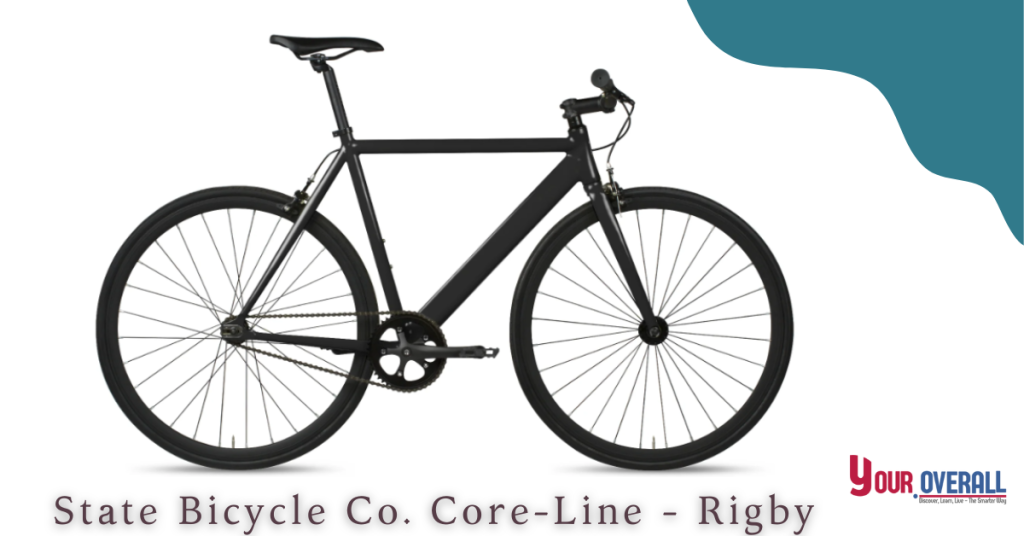
Pros |
Cons |
|---|---|
|
✅ Strong aftermarket support |
❌ Heavy frame compared to aluminum models |
|
✅ Vibrant color options |
❌ Stock gearing struggles on hills |
|
✅ Lifetime warranty on frame |
Check More details:
All-City Thunderdome
Frame: UCI-certified 7000-series aluminum with Whisky No.7 carbon fork
Recommended Frame: Aluminum Frame with Carbon Fork
- Material: High-quality aluminum with a carbon fork is ideal for track racing and competitive riding. The aluminum offers a balance of strength and weight reduction, while the carbon fork absorbs vibrations, making it more comfortable during high-speed sprints.
- Geometry: Velodrome-ready geometry focuses on performance with an aggressive riding position for speed.
- Best For: Competitive riders who need a lightweight, race-oriented bike for track events.
Weight: ~17.8 lbs (54cm frame)
Tire Clearance: 700×25mm max.
Key Features:
- Velodrome-ready geometry
- Stainless steel dropouts
- Carbon fork for vibration dampening
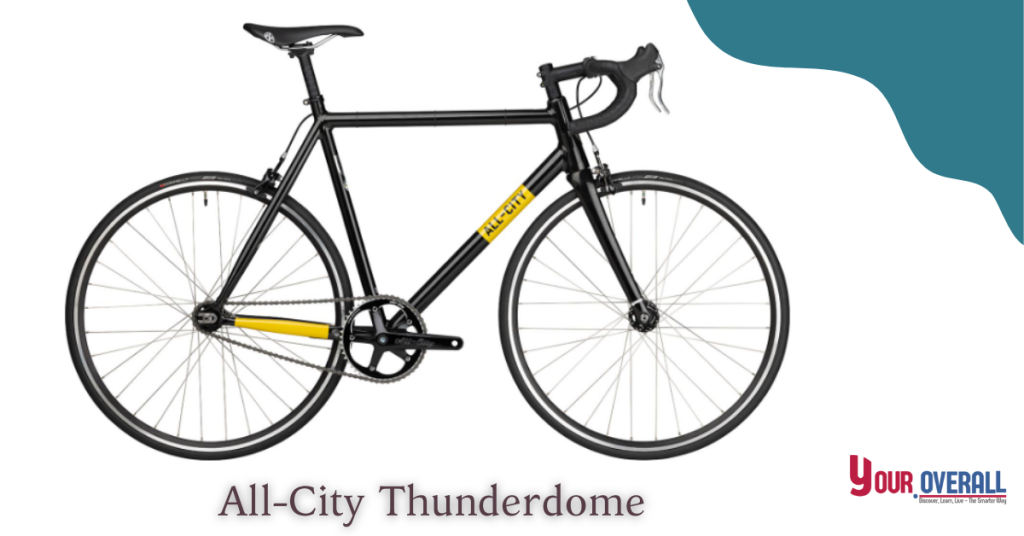
Pros |
Cons |
|---|---|
|
✅Ultra-stiff for sprinting |
❌ Narrow tire clearance limits versatility for rough terrain or gravel |
|
✅ Lightweight yet durable |
❌ Expensive for casual riders |
|
✅ Sleek, race-oriented aesthetics |
Check More details:
Wabi Lightning
Frame: Columbus Spirit steel tubing with carbon fork
Recommended Frame: Steel Frame with Carbon Fork
- Material: Steel frames provide a smooth ride with excellent shock absorption, while the carbon fork helps reduce road vibrations for a more comfortable experience.
- Geometry: Lightweight touring geometry that is comfortable for longer rides and efficient on climbs and descents.
Best For: Cyclists looking for a combination of performance, comfort, and lasting durability.
Weight: 17–18.5 lbs (complete)
Tire Clearance: 28mm max.
Key Features:
- Customizable build options
- Sealed bearing hubs

Pros |
Cons |
|---|---|
|
✅Smooth steel ride quality |
❌ No rack/fender mounts for commuter gear |
|
✅Agile on climbs and descents |
❌ Limited tire width for gravel riding |
|
✅Handcrafted craftsmanship |
Check More details:
Priority Ace
Frame: Aluminum with Gates Carbon Drive belt system
Recommended Frame: Aluminum Frame with Belt Drive
- Material: Lightweight and rust-resistant aluminum paired with a maintenance-free Gates Carbon Drive system for smooth, silent operation.
- Geometry: Urban commuter-friendly, designed for comfort and ease of use.
- Best For: Cyclists looking for a mix of performance, comfort, and long-lasting durability.
Weight: ~22 lbs
Tire Clearance: 32mm
Key Features:
- Rust-proof carbon belt drive
- Internal gear hub (3-speed optional)
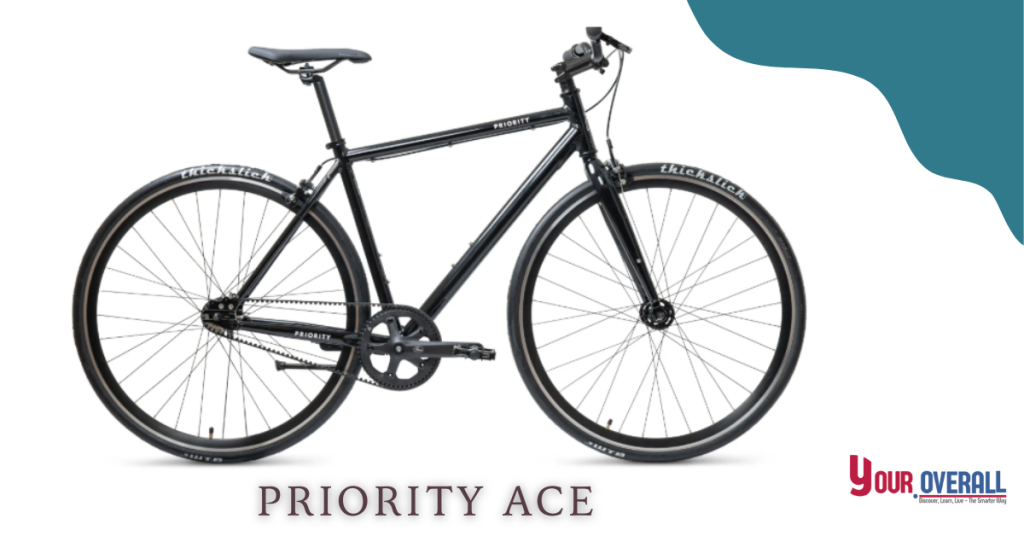
Pros |
Cons |
|---|---|
|
✅ Silent, grease-free drivetrain |
❌ Belt drive complicates gear changes |
|
✅ Durable for wet climates |
❌ Pricier than chain-driven bikes |
|
✅ Stylish, modern design |
Check More details:
All-City Super Professional Apex 1
Frame: Chromoly steel with sliding dropouts
Recommended Frame: Chromoly Steel Frame with Sliding Dropouts
- Material: Chromoly steel offers durability, comfort, and shock absorption, making it ideal for all-terrain versatility. The sliding dropouts allow for customization of gear ratios.
- Geometry: Versatile geometry that performs well on all-weather commutes and gravel adventures.
- Best For: Cyclists looking for a bike that performs well across various terrains and weather conditions.
Weight: ~24 lbs
Tire Clearance: 700×45mm
Key Features:
- Hydraulic disc brakes
- Rack/fender mounts

Pros |
Cons |
|---|---|
|
✅ Exceptional versatility for mixed-terrain use |
❌ Heavier than pure track bikes |
|
✅ Comfortable on rough roads |
❌ Dropout alignment can be finicky |
|
✅ Durable construction |
Check More details:
6KU Track Fixed-Gear
Frame: Aluminum
Recommended Frame: Aluminum Frame
- Material: Lightweight aluminum is perfect for city riding, offering quick acceleration and responsiveness.
- Geometry: Simple geometry ideal for city commuting, allowing for a fast, nimble ride.
- Best For: Budget-conscious city riders.
Weight: ~20 lbs
Tire Clearance: 28mm
Key Features:
- Flip-flop hub
- Deep-v rims
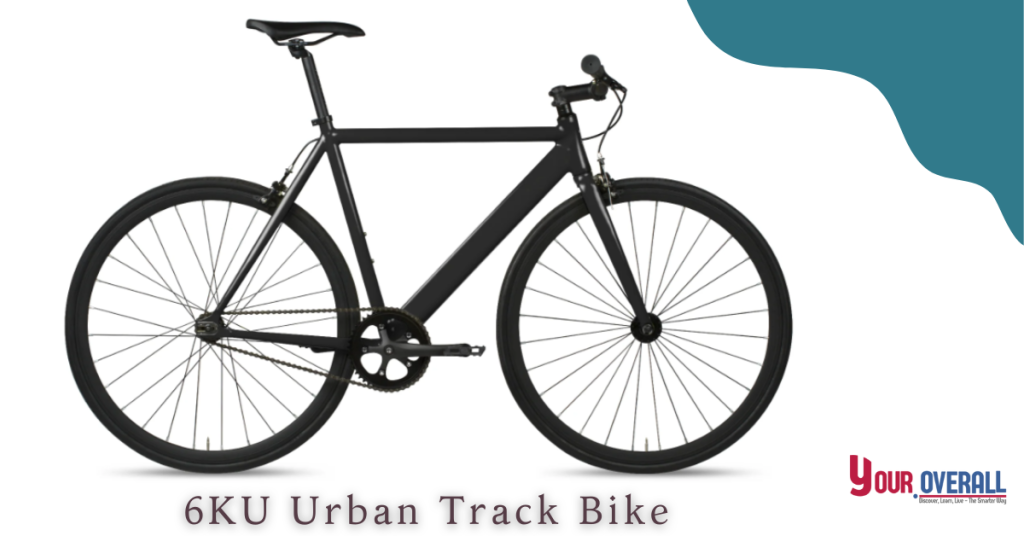
Pros |
Cons |
|---|---|
|
✅ Lightweight aluminum frame |
❌ Basic components (e.g., brakes, pedals) |
|
✅ Modern track aesthetics |
❌ Harsh ride on uneven roads due to minimal tire clearance |
|
✅ Easy to upgrade components |
Check More details:
Retrospec Harper Fixie
Frame: Steel
Recommended Frame: Steel Frame
- Material: Steel construction provides durability and comfort, especially for short city rides.
- Geometry: Relaxed geometry that promotes comfort for urban commutes.
- Best For: Budget-conscious riders who need a basic, low-maintenance bike for short city trips.
Weight: ~22 lbs
Tire Clearance: 28mm
Key Features:
- Horizontal dropouts
- Dual caliper brakes
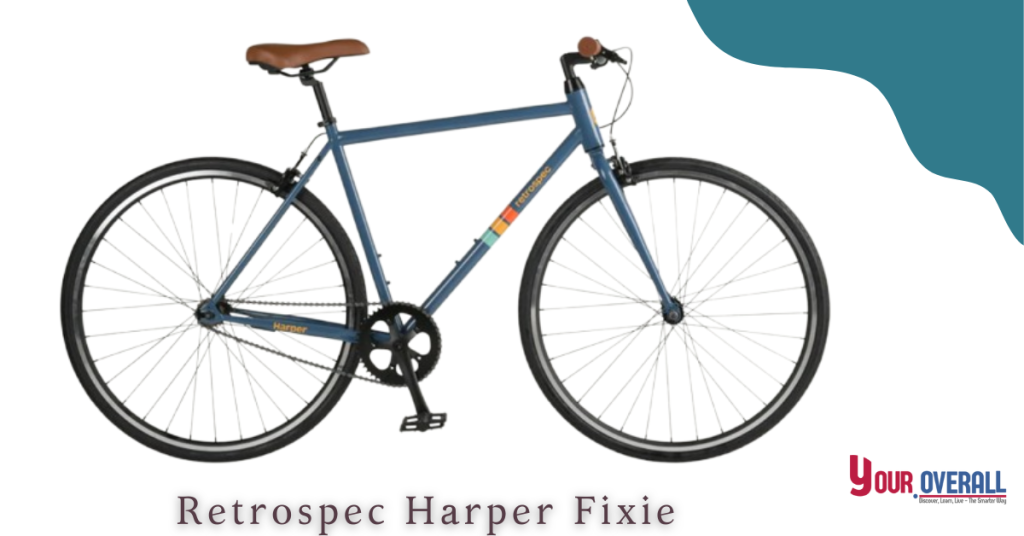
Pros |
Cons |
|---|---|
|
✅ Affordable entry price |
❌ Low-tier components (e.g., hubs, crankset) |
|
✅ Simple to maintain |
❌ Mediocre braking performance |
|
✅ Includes mudguard mounts for all-weather riding |
Check More details:
Schwinn Kedzie
Frame: High-tensile steel
Recommended Frame: Steel Frame
- Material: Steel frames provide a solid, durable foundation, ideal for leisure riders.
- Geometry: Upright geometry designed for comfort on casual leisure rides.
- Best For: First-time riders or those looking for a bike for leisurely urban commutes.
Weight: 31 lbs
Tire Clearance: 28mm
Key Features:
- Flat handlebars
- Chainguard
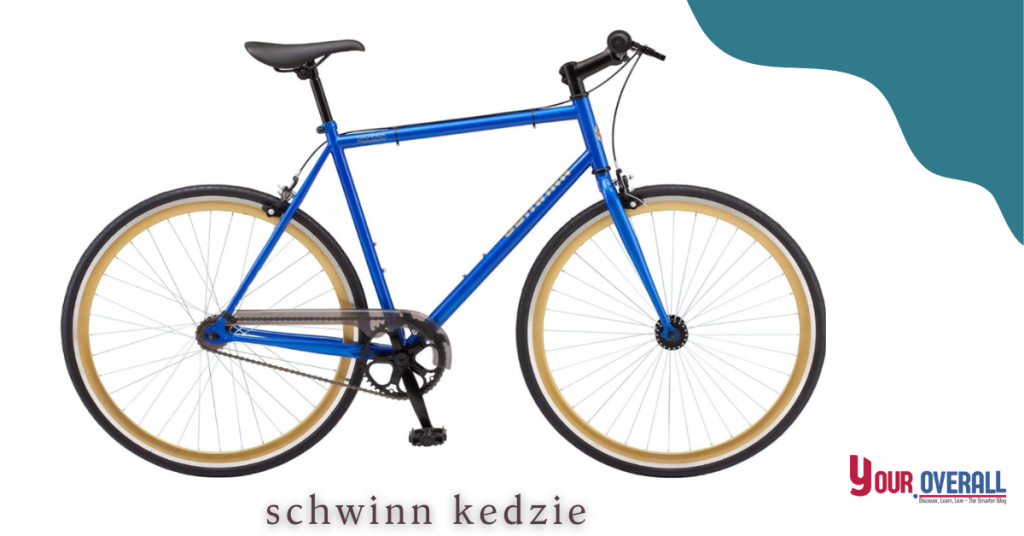
Pros |
Cons |
|---|---|
|
✅ Bombproof construction |
❌ Very heavy for city commuting |
|
✅ Upright riding position for comfort |
❌ Outdated geometry limits speed and agility |
|
✅ Includes basic accessories for convenience |
Check More details:
Comparison Table
Model |
Frame Material |
Weight(lbs) |
Tire Clearence |
Best for |
Recommended Site |
|---|---|---|---|---|---|
|
All-City Thunderdome |
Aluminum |
17.8 |
25mm |
Track racing, sprinting |
|
|
Wabi Lightning |
Steel |
17–18.5 |
28mm |
Lightweight touring |
|
|
Priority Ace |
Aluminium |
22 |
32mm |
Low-maintenance commuting |
|
|
6KU Track |
Aluminium |
20 |
28mm |
Budget city riding |
|
|
All-City Super Pro |
Steel |
24 |
45mm |
All-weather commuting, gravel |
|
|
State Core-Line |
Steel |
24 |
28mm |
Customization projects |
|
|
Retrospec Harper |
Steel |
22 |
28mm |
Casual urban trips |
|
|
Schwinn Kedzie |
Steel |
31 |
28mm |
First-time riders, leisure |
Final Recommendations
- Track Performance Pick: All-City Thunderdome (ultra-stiff, race-ready).
- Road Performance Pick: Wabi Lightning (lightweight, handcrafted for smooth rides).
- Urban Commuter: Priority Ace (low-maintenance, belt drive) or All-City Super Professional (versatile for various weather and terrains).
- Budget-Friendly Options: Retrospec Harper (affordable, easy maintenance) or 6KU Track (basic components but cost-effective).
- Beginner-Friendly: Schwinn Kedzie (ease of use) or State Core-Line (customizable for riders looking to personalize their ride).
Note: Steel frames, like the Wabi Lightning and All-City Super Professional, prioritize comfort and durability, making them ideal for rougher terrain. Aluminum frames, such as the 6KU Track and Thunderdome, offer lighter weight and faster speeds, but may be less forgiving on bumpy surfaces. Select your bike based on your riding style, the type of terrain you’ll encounter, and the possibility for future upgrades.
How to Choose the Right Fixed Gear Bike Frame
Your no-nonsense guide to finding the perfect match
Step 1: Match Frame to Riding Style
Fixed-gear frames shine in specific scenarios. Align your needs:
- Urban Commuting: Prioritize ≥32mm tire clearance for potholes, relaxed geometry for comfort, and fender mounts.
- Track Racing: Opt for steep angles (74°+ head tube) and lightweight materials like aluminum.
- Mixed Terrain: Seek cyclocross-inspired frames with higher BB drop and reinforced tubing.
Tire Tip: Wider tires (≥32mm) add stability and comfort across all riding styles—don’t overlook this!
Step 2: Nail the Fit
Formula Simplified:
Frame Size (cm) ≈ Your Height (inches) × 2.3
Height Frame Size
5’4″-5’7″ 49-52cm
5’8″-5’11” 53-55cm
6’0″-6’3″ 56-58cm
Test Ride Checks:
Here are the rephrased lines:
- Standover Clearance: Make sure there is enough space between the top tube and your inseam for 1-2 fingers to fit comfortably.
- Reach: When gripping the handlebars, your arms should gently bend.
Step 3: Material Breakdown
Material |
Ride Feel |
Best Use |
Lifespan |
|---|---|---|---|
|
Steel |
Smooth, dampened |
City Streets |
20+ years |
|
Aluminium |
Stiff, direct |
Racing/flat roads |
5-7 years |
|
Titanium |
Balanced |
All-weather |
Lifetime |
Real-World Example: My steel Fuji Feather cushions NYC’s potholes while my aluminum 6KU frame flies on smooth roads.
Step 4: Geometry Decoded
Key measurements for stability vs. speed:
- Head Tube Angle:
- 72° or less: Stable steering (ideal for commuting)
- 74° or more: Agile handling (perfect for racing)
- Chainstay Length:
- Short (390-405mm): Quick skids, playful rides
- Long (415-430mm): Stable cruising
Pro Insight: Head tube length matters, too—longer tubes create upright postures (comfort), while shorter ones lean you forward (speed).
Step 5: Future-Proof Features
- Tire Clearance: 32mm+ accommodates gravel/commuter tires
- Brake Compatibility: Disc mounts handle rain better
- Coating: Powder-coated finishes resist rust, especially in wet climates
Avoid My Mistake: I bought a gorgeous track frame that maxed at 25mm tires—now it collects dust!
Decision Cheat Sheet
Rider Profile Top Pick Why It Works
Daily Commuter State Core-Line 32mm tires + relaxed geometry absorb city bumps.
Speed Enthusiast 6KU Aluminum Track 19.8 lbs + aero design for flat-road sprints
Customization Lover Pure Cycles Original Threaded fork + wide tire clearance for mods
Competitive Racer All-City Thunderdome UCI-certified geometry for podium finishes
Maintenance Tips for Fixed-Gear Bike Frames
Keep your ride smooth, safe, and rust-free with these pro strategies
Clean Like a Pro
Weekly Routine:
Frame: Wipe with a damp microfiber cloth to remove road .
Drivetrain: Use a biodegradable degreaser on the chain, cog, and chainring.
Pro Tip: Avoid high-pressure hoses—they force grit into bearings!
Monthly Deep Clean:
- Remove wheels for full access
- Scrub chain with a toothbrush + citrus degreaser
- Rinse with a sponge (never direct water jets)
My Mistake: Skipping deep cleans led to a seized chainring bolt mid-commute. Don’t be me!
Lube Smart, Not Hard
Dry Conditions: Wax-based lube (lasts longer, attracts less dirt)
Wet Weather: Wet lube (sticks better in the rain)
Apply: 1 drop per chain link → wipe excess to avoid “gunk magnet”
Frequency:
City riders: Every 100 miles
Rainy days: Relube immediately after
Bolt Check Ballet
Critical Bolts to Tighten Monthly:
– Crank bolts
– Stem/handlebar clamp
– Cog + lockring (use 15Nm torque – about wrist-tight + ¼ turn)
Test: Lift the bike 6” and drop it—only the tires should bounce. Rattles mean loose parts!
Tire Pressure Perfection
Tire Width |
PSI Range |
Use Case |
|---|---|---|
|
25mm |
90-110 |
Smooth pavement |
|
28mm |
80-95 |
Mixed surfaces |
|
32mm+ |
60-75 |
Pothole warfare |
Pro Hack: Mark your ideal PSI on the tire with a paint pen.
Chain Tension Zen
Ideal Slack: vertical movement when pressed.
Check Weekly:
- Flip the bike upside down
- Pull the chain at the 3 o’clock position
- Adjust via horizontal dropouts if loose
Caution: Over-tensioning strains hubs and knees!
Rust Prevention Playbook
Steel Frames:
– Apply car wax quarterly (especially weld points)
– Store indoors during humidity >70%
Aluminum/Titanium:
– Silicone spray on bolt threads
– Check for galvanic corrosion yearly
True Story: A Brooklyn courier’s 10-year-old steel frame survives because he waxes religiously.
Seasonal Shifts
Winter:
– Wash weekly (road salt eats metal)
– Switch to studded tires below 35°F
Summer:
– Check tire pressure biweekly (heat expands air)
– Grease the Seat-post to prevent seizing
Maintenance Schedule Cheat Sheet
Task |
Frequency |
Tools Needed |
|---|---|---|
|
Chain lube |
100 miles |
Rag, lube |
|
Bolt check |
Monthly |
Allen keys, torque wrench |
|
Deep clean |
300 miles |
Degreaser, brushes |
|
Bearing overhaul |
Yearly |
Grease, cone wrenches |
Fixed Gear Bike Frame FAQ's
Answers to the questions every rider asks (but rarely Googles)
Q1: What makes a frame suitable for fixed-gear bikes?
Must-Have Features:
-Horizontal dropouts (slotted rear wheel mounts) for chain tensioning
-Track ends (angled dropouts) for precise wheel alignment
– No derailleur hangers (clean frame lines)
Pro Tip: Vintage steel road frames (1990s-2000s) often make perfect fixie conversions. Check grandma’s garage!
Q2: How do I choose the right frame size?
Formula:
Frame Size (cm) = Inseam (cm) × 0.66`
Test Ride Check: 1-2″ clearance between the top tube and inseam when standing over.
Height Range |
Frame Size |
|---|---|
|
5'4"-5'7" |
49-52cm |
|
5'8"-5'11" |
53-55cm |
|
6'0"-6'3" |
56-58cm |
Q3: Steel vs. Aluminum vs. Carbon – which is best?
Material |
Best For |
Avg Lifespan |
Ride Quality |
|---|---|---|---|
|
Steel |
Comfort/durability |
20+ years |
Smooth |
|
Aluminum |
Budget/speed |
5-7 years |
Stiff |
|
Carbon |
Racing |
3-5 years |
Harsh |
Hot Take: NYC messengers swear by steel – its vibration-damping beats carbon’s weight savings for city riding.
Q4: Can I convert any bike to fixed gear?
Yes, IF:
✅ Horizontal dropouts present
✅ Bottom bracket matches crank type (BSA, ITA, etc.)
✅ Frame clears ≥28mm tires
No, IF:
❌ Vertical dropouts (can’t tension chain)
❌ Carbon frame (drilling voids warranty)
Q5: How often should I maintain my fixed gear?
Essential Schedule:
Daily: Quick bolt check (lift/drop test)
Weekly: Tire pressure, chain lube
Monthly: Deep clean, bearing inspection
Yearly: Full overhaul (replace cables, grease bearings)
Q6: What’s the max weight limit for frames?
Standard Limits:
– Steel/Aluminum: 250-300 lbs (rider + cargo)
– Carbon: 200-220 lbs (check manufacturer specs)
6KU Example: 250 lbs rider + 50 lbs cargo
Pro Hack: Wider tires (32mm+) distribute weight better.
Q7: Flip-flop hub vs. fixed hub – difference?
Flip-Flop Hub:
– Lets you switch between fixed-gear and freewheel
– Requires dismounting wheel to flip
Fixed Hub:
– Permanently fixed drivetrain
– Lighter weight (no freewheel mechanism)
Q8: Why don’t I see carbon fixed-gear frames?
Key Reasons:
- Fixed-gear’s stop/skid stresses crack carbon
- Aluminum/steel offers better impact resistance
- Carbon’s high cost vs. Fixie’s minimalist ethos
Exception: High-end track bikes (Olympic velodromes)
Q9: How tight should my chain be?
Goldilocks Zone:
– ½” vertical movement when pressed
Too loose: Chain drops
Too tight: Strains hubs/bottom bracket
Pro Tip: Check tension weekly – city riding stretches chains faster!
Q10: Can I add brakes later?
Depends On:
Frame: Pre-drilled brake mounts (most urban frames)
Fork: Crown hole for front brake
Wheels: Brake track surface
Workaround: Use bolt-on calipers (no drilling needed)
Conclusion
The road to the best fixed gear bike frames starts with the right knowledge, but the ride truly begins when you find your ideal setup.* By now, you should have a clear understanding of how to choose the best fixed gear bike frames based on your riding style, budget, and personal preferences. Whether you’re commuting through the city, racing on a track, or tackling mixed terrain, there’s a frame out there that will offer the perfect balance of comfort, speed, and durability.
Key Takeaways:
Riding Style: The first step is to know where and how you’ll ride. Commuters need comfort, racers need speed, and all-terrain riders need versatility.
Fit and Geometry: Always prioritize fit. A frame that suits your body and riding posture will make all the difference in comfort and performance.
Material and Features: Steel frames are perfect for daily rides, while aluminum and carbon shine for speed. Features like tire clearance, brake compatibility, and dropouts are critical for future-proofing your ride.
Maintenance: Keeping your frame in top shape with regular maintenance ensures longevity and keeps your ride smooth.
Final Thoughts:
There’s no “one-size-fits-all” when it comes to fixed-gear bikes. The right frame for you depends on your unique needs and riding habits. Don’t rush the decision—take your time to test different styles, experiment with adjustments, and invest in the components that best suit your goals. And most importantly, remember that biking is about enjoying the journey—whether you’re cruising down city streets or racing through open roads.
“Stay Safe, Ride Smart”
Remember, the right frame is only part of the equation. Keep your bike maintained, stay visible, and always ride safely. If you ever feel unsure, don’t hesitate to consult an expert or get a professional bike fitting to maximize comfort and performance.
Happy riding, and may your wheels always stay true!
